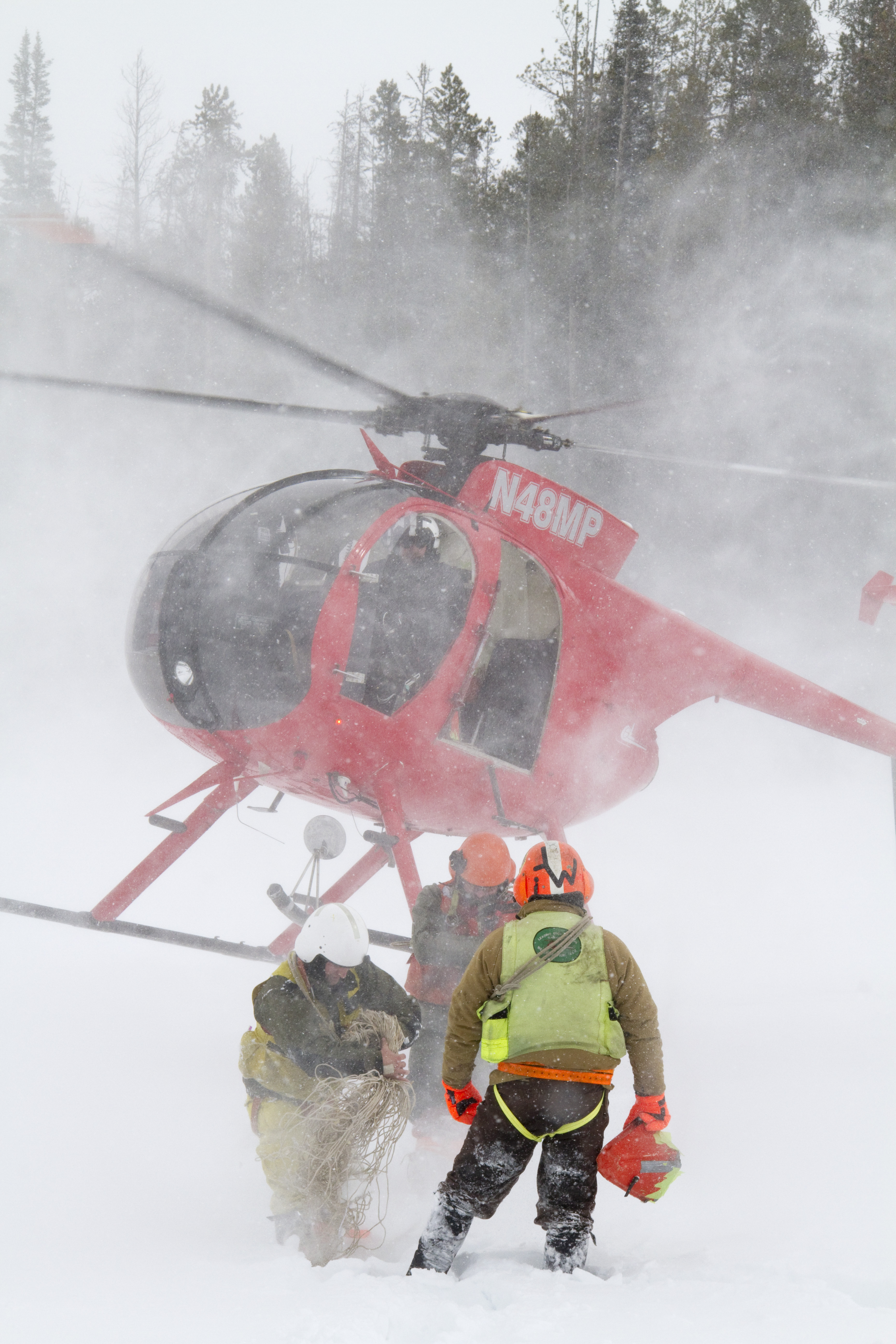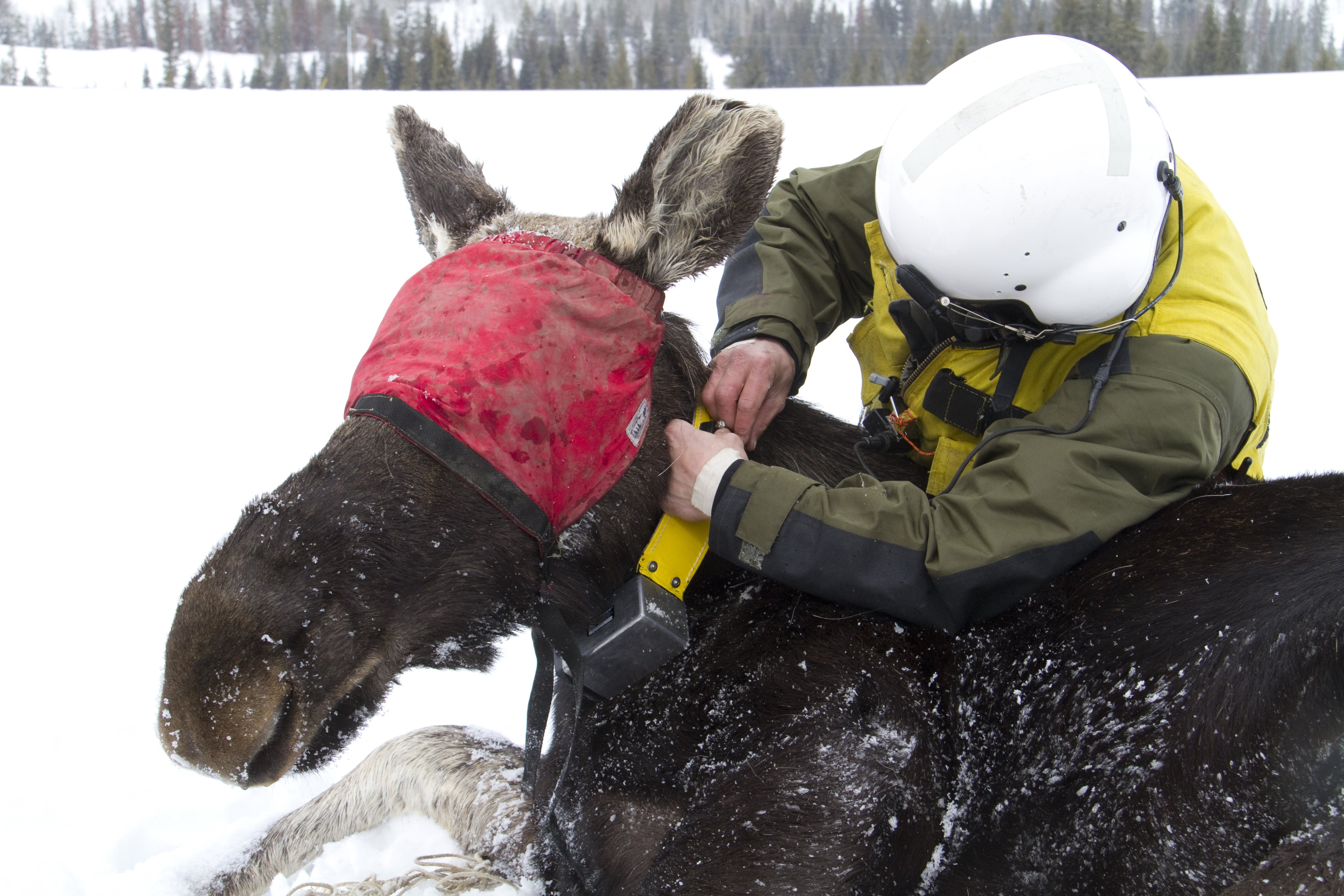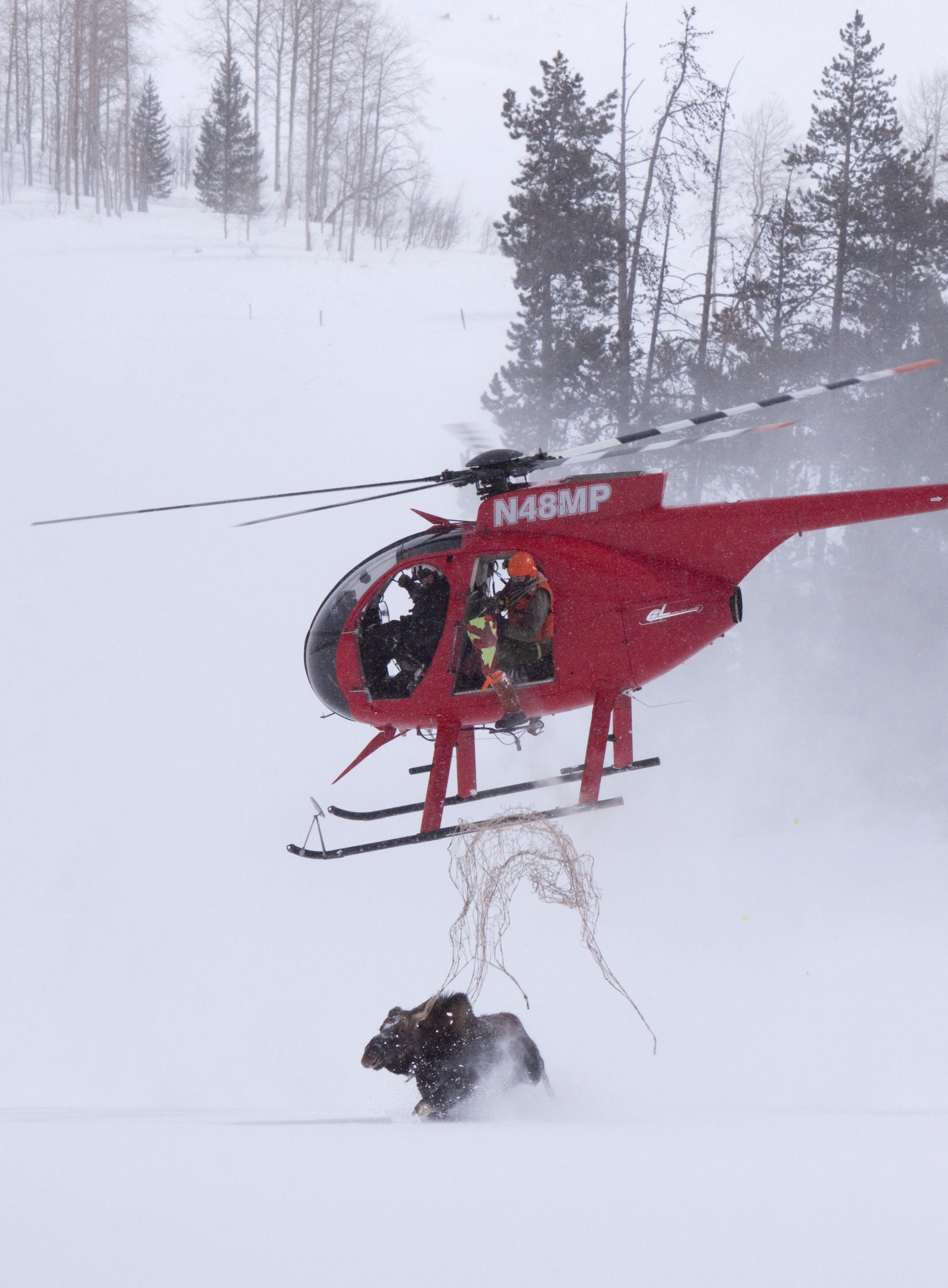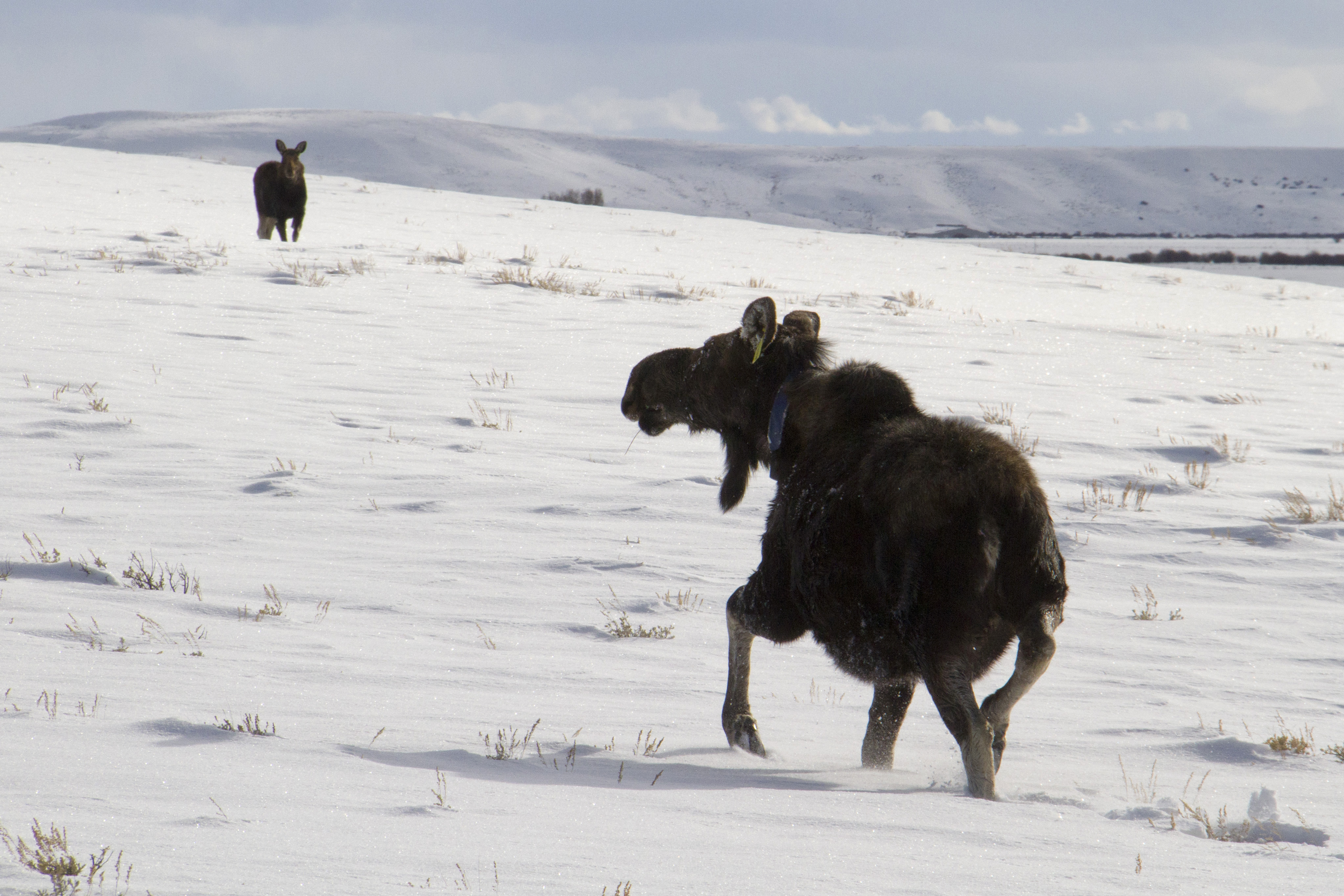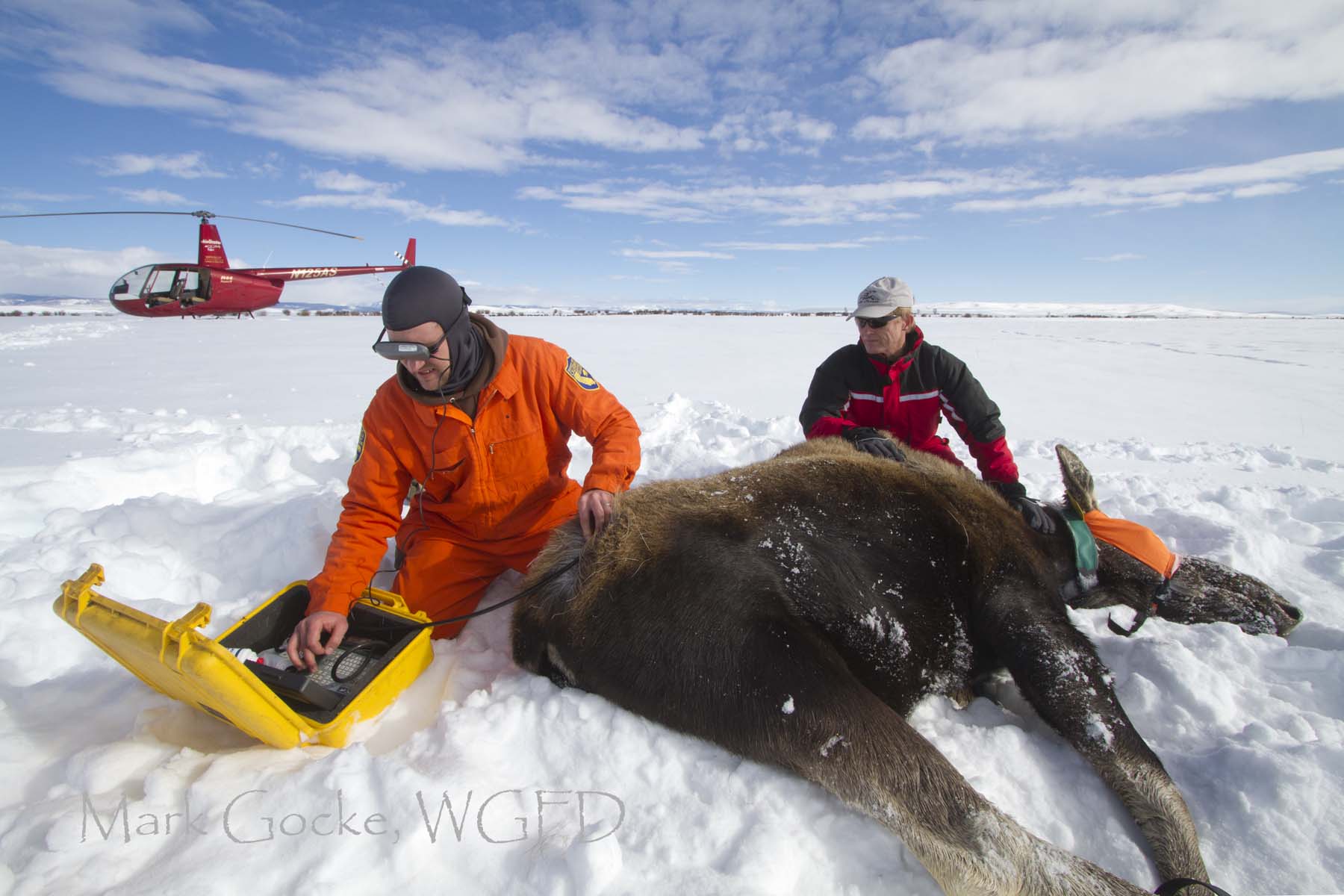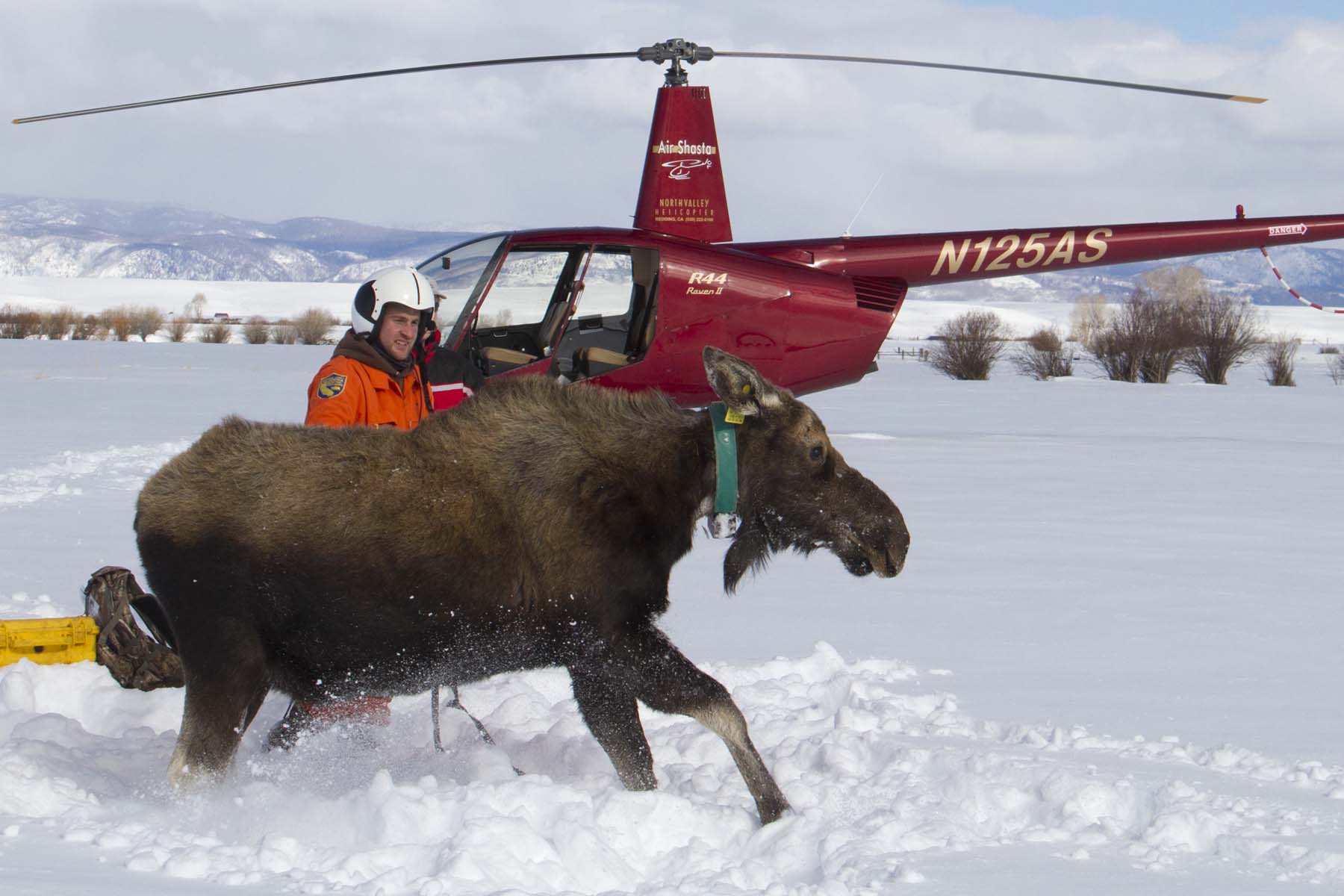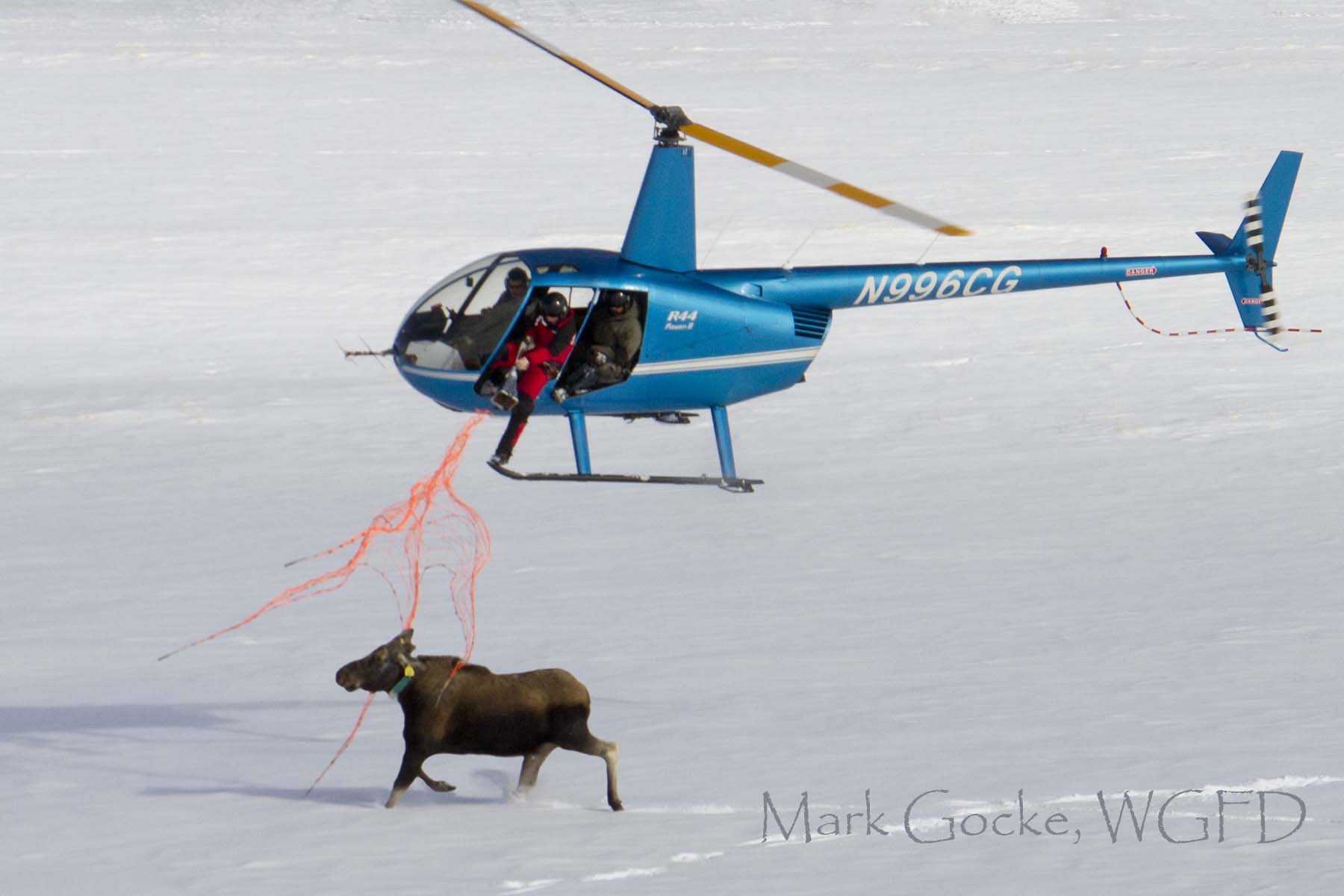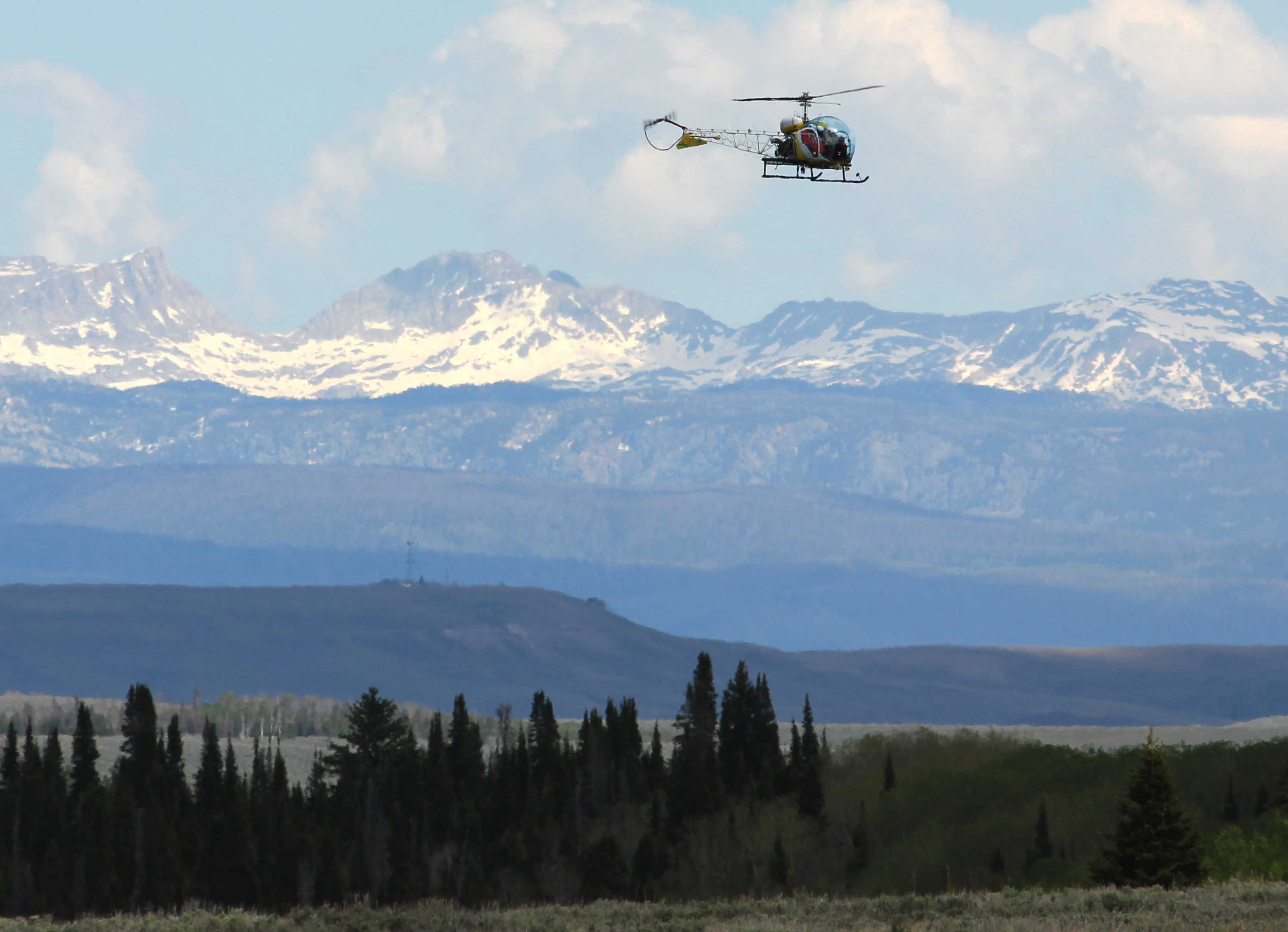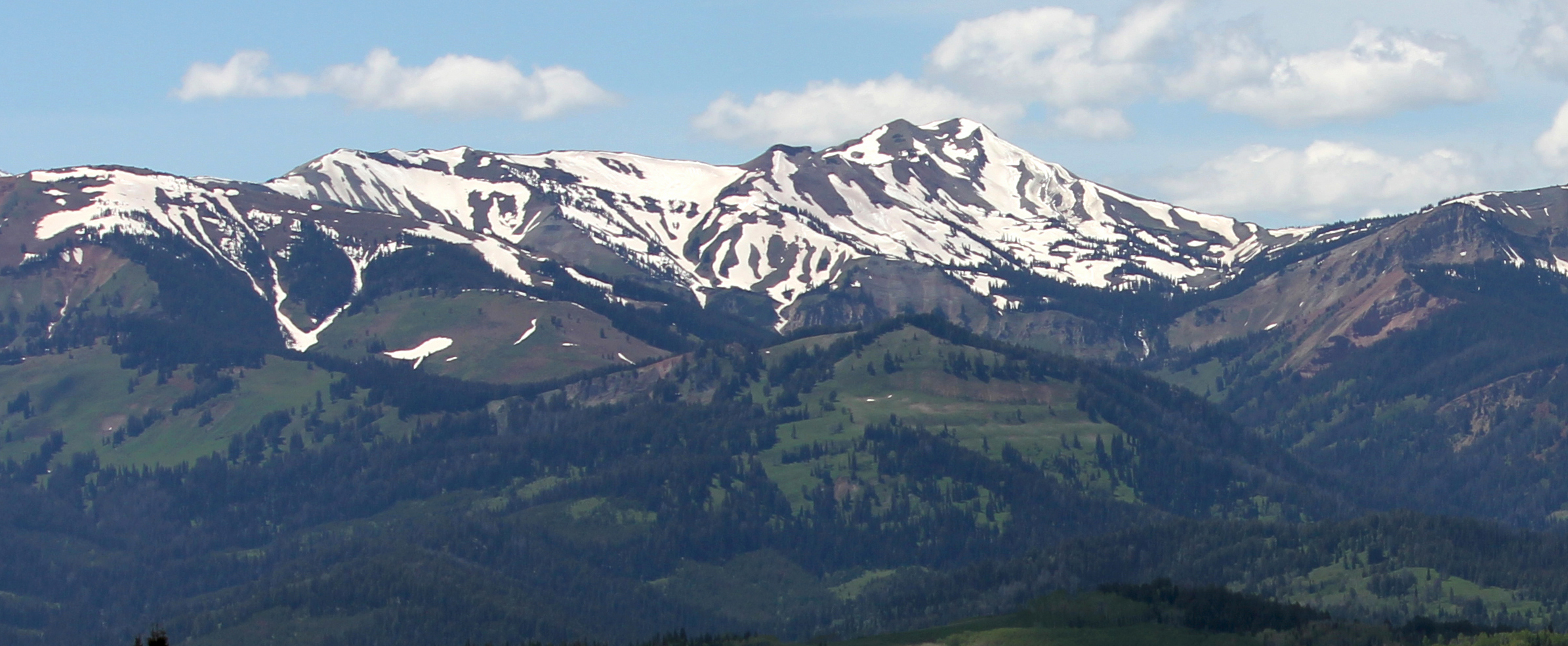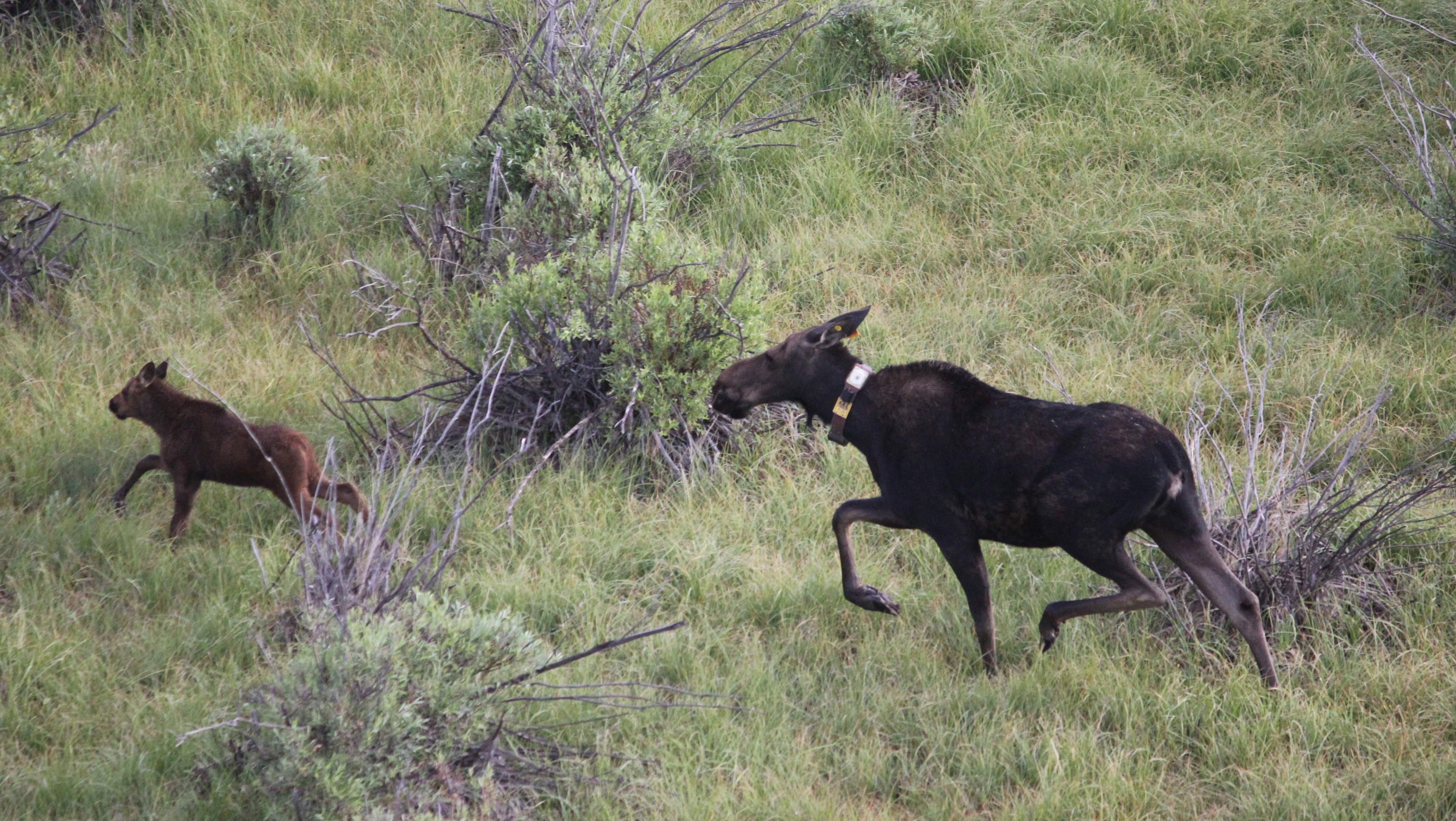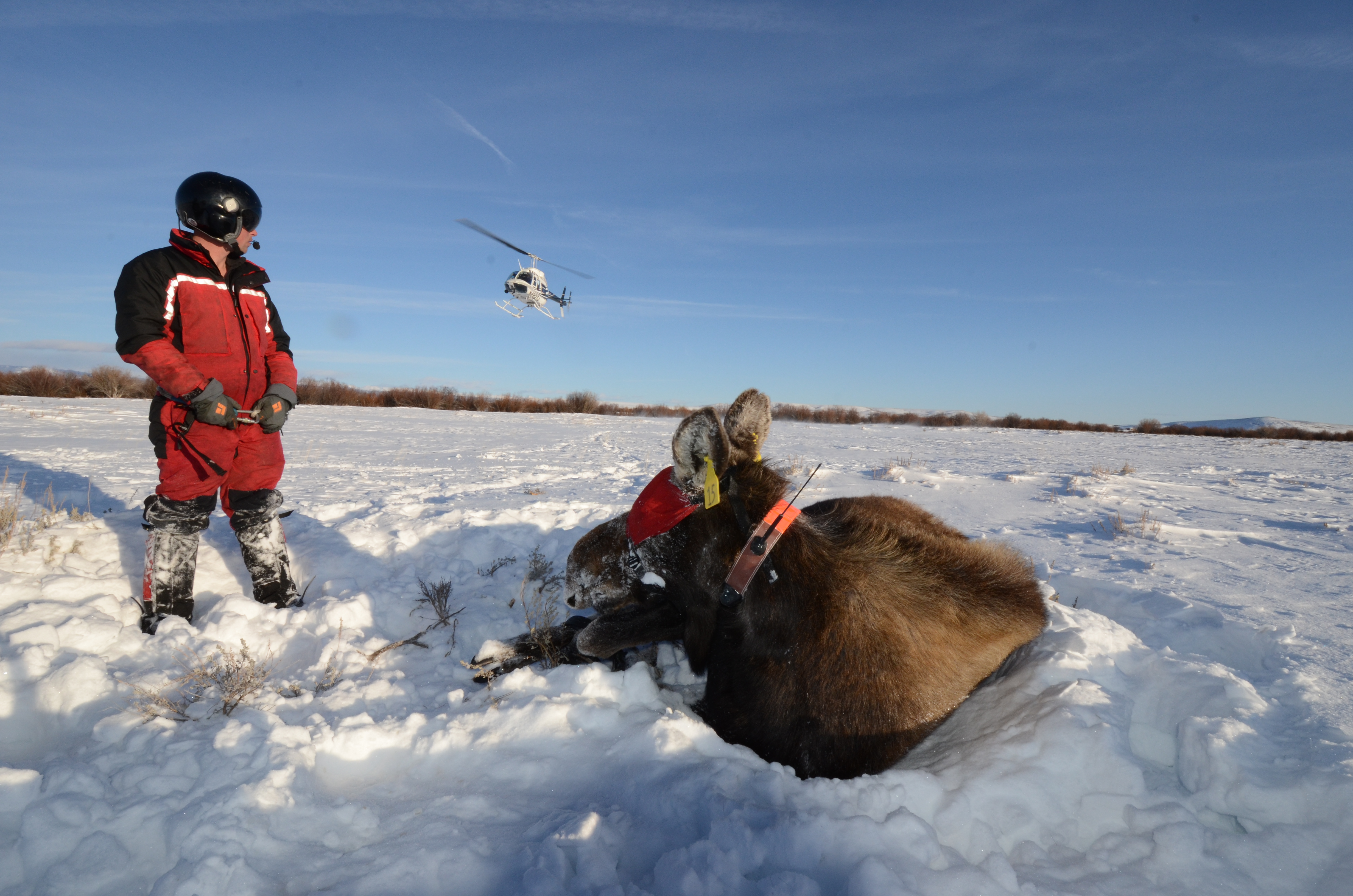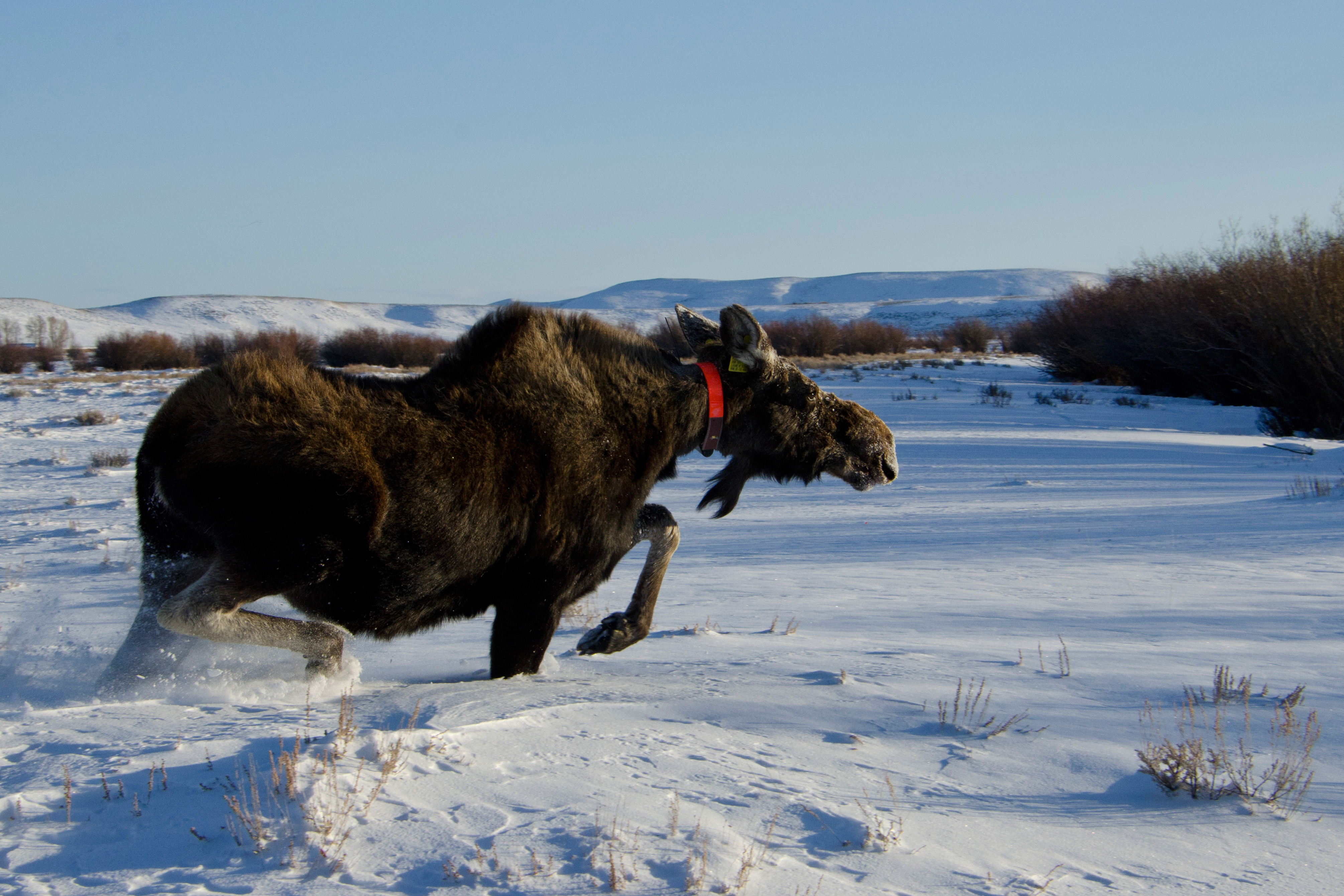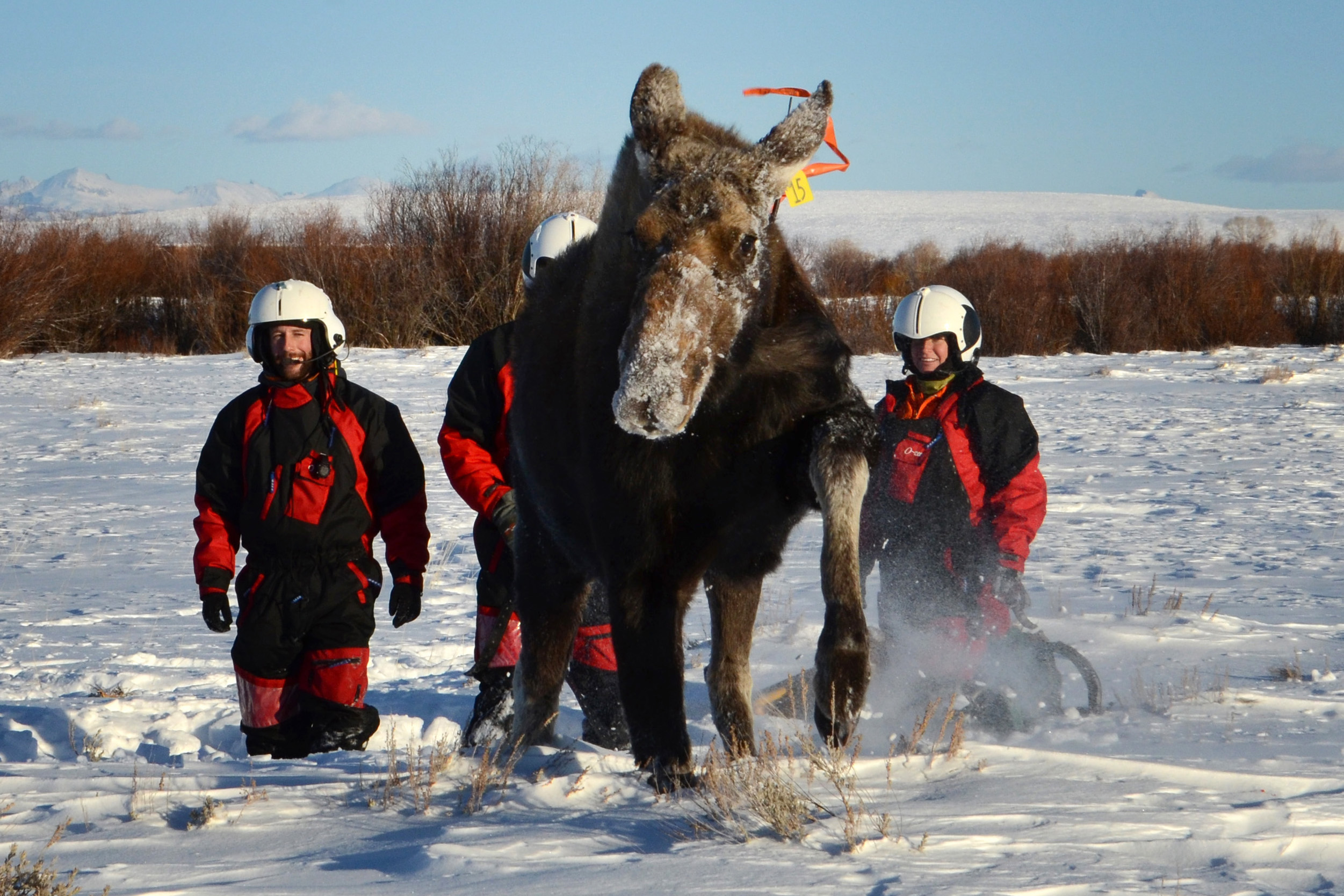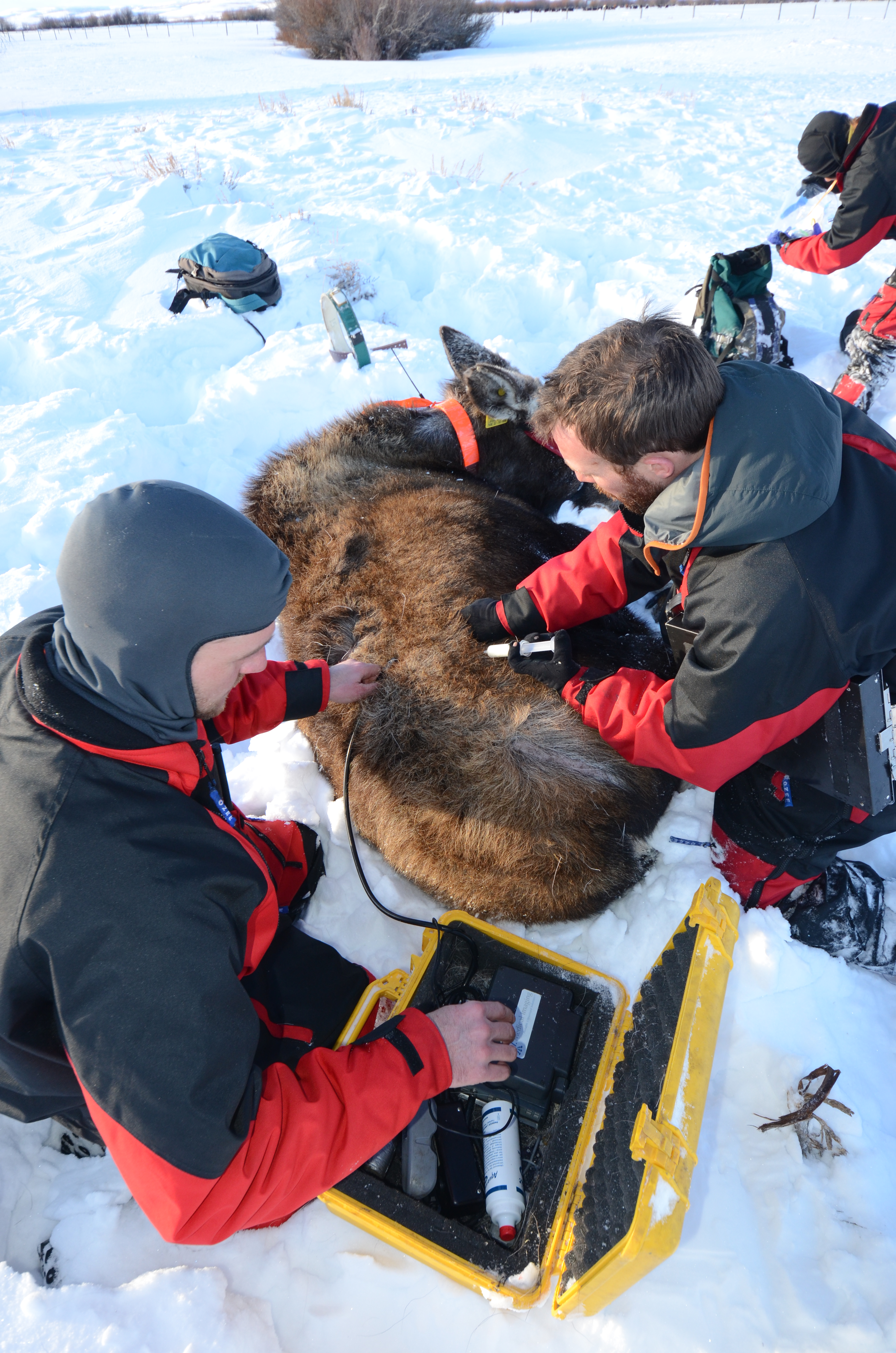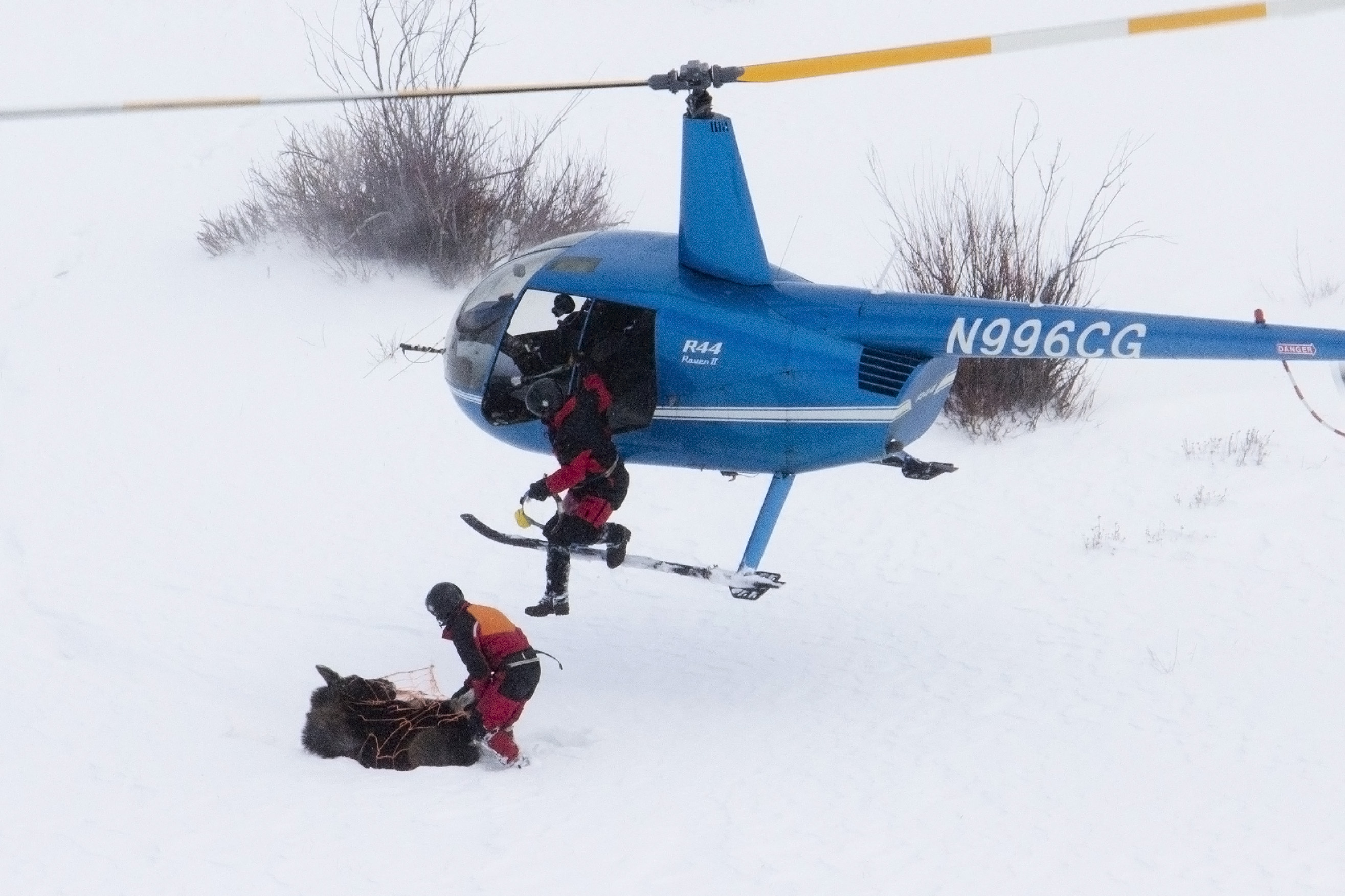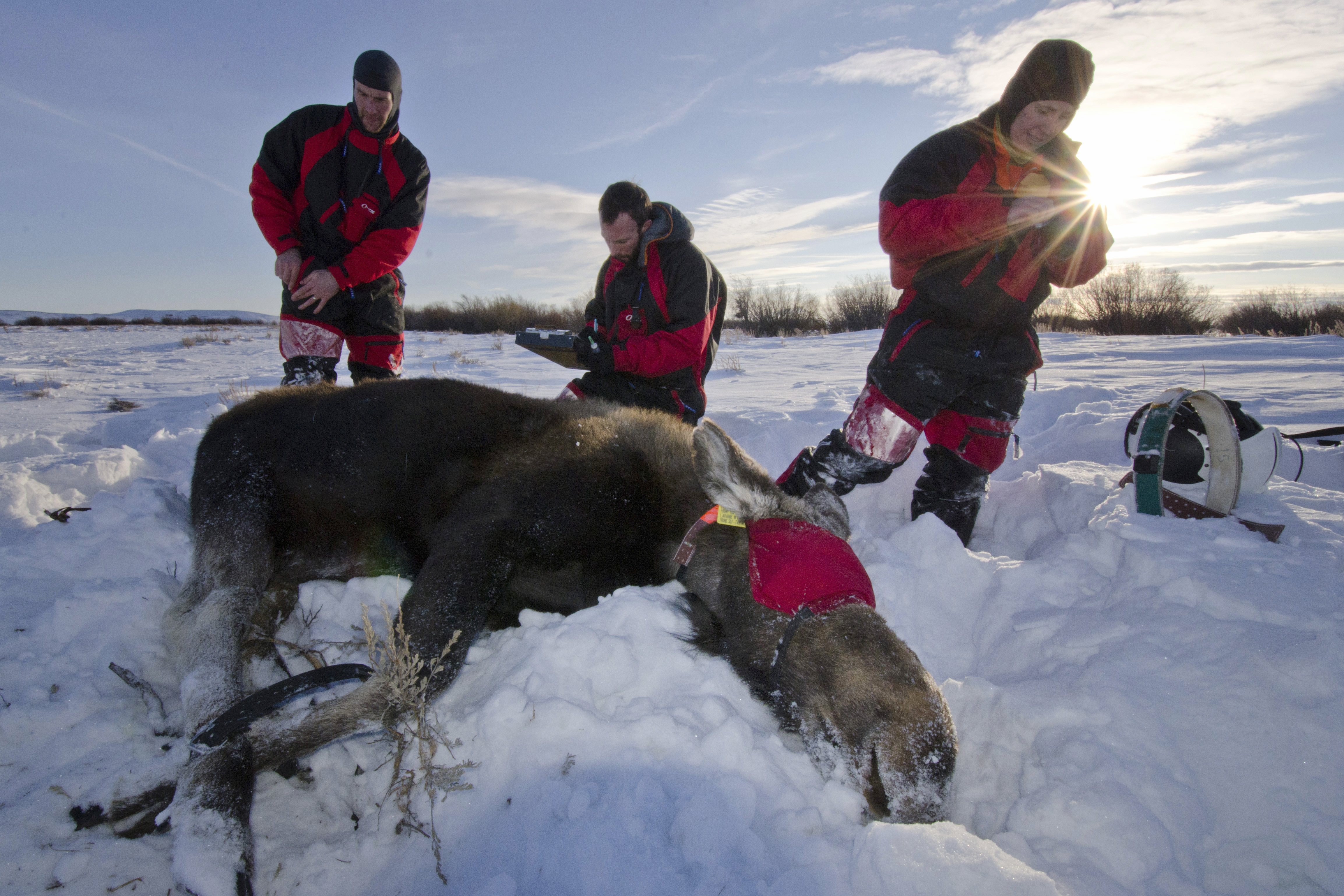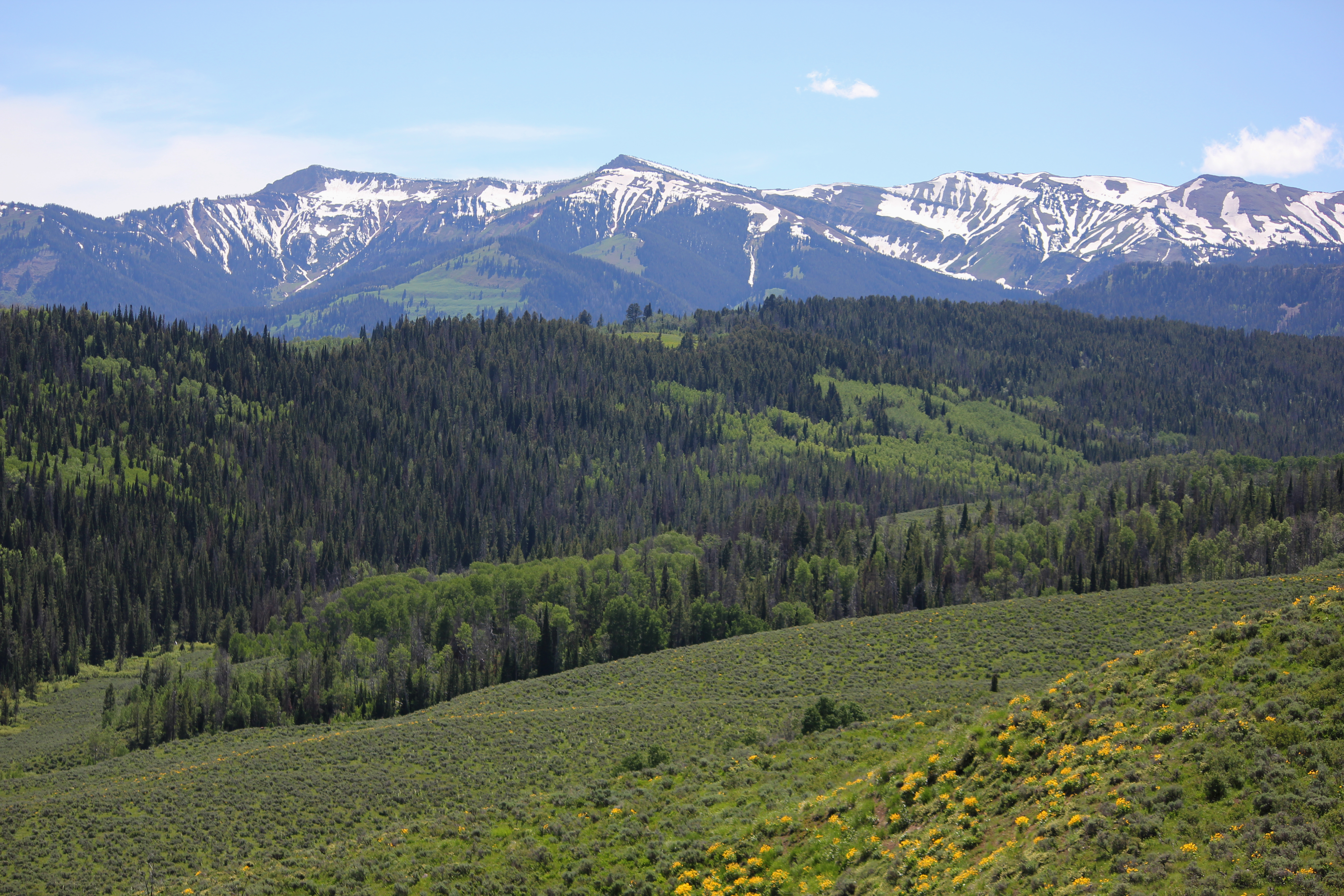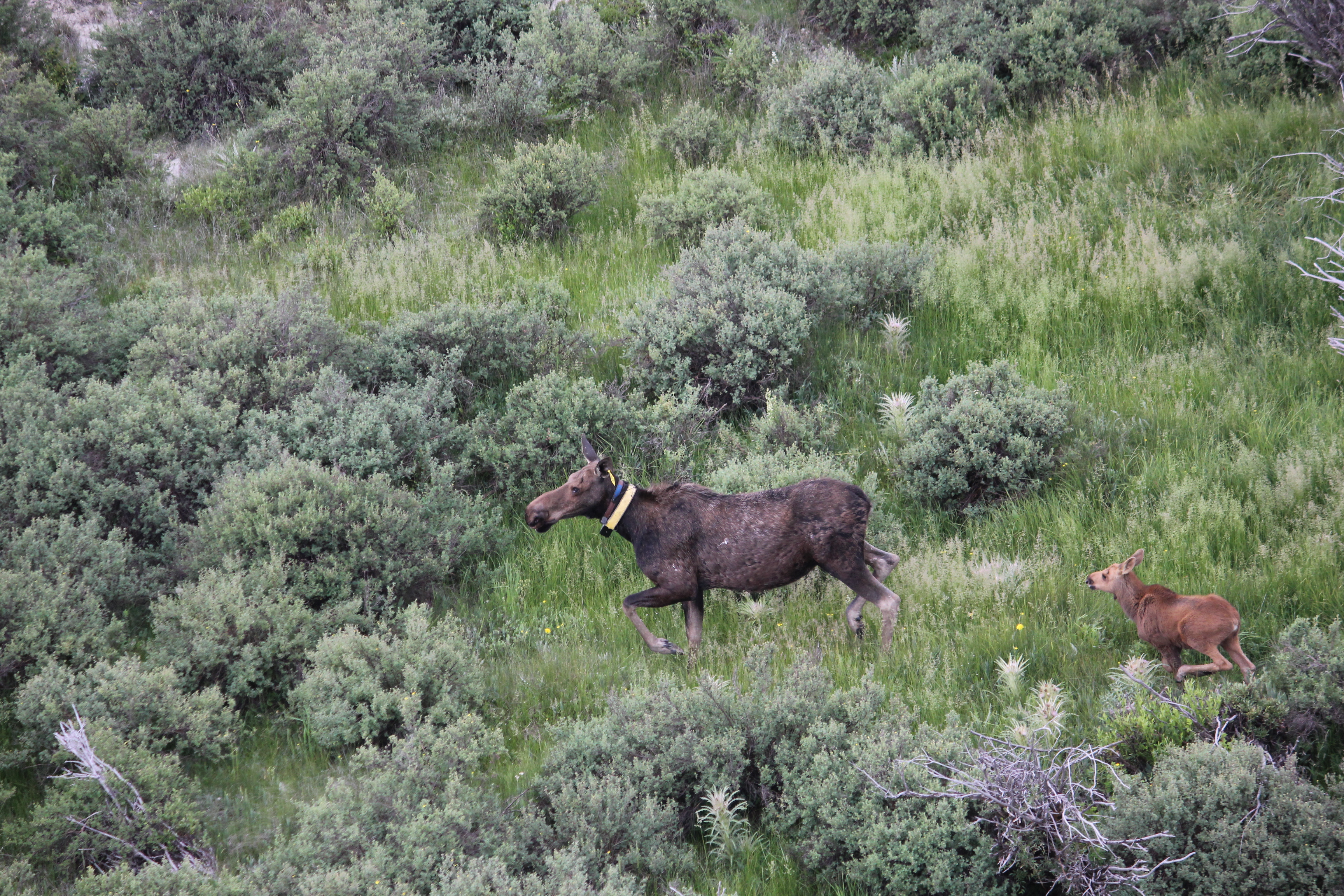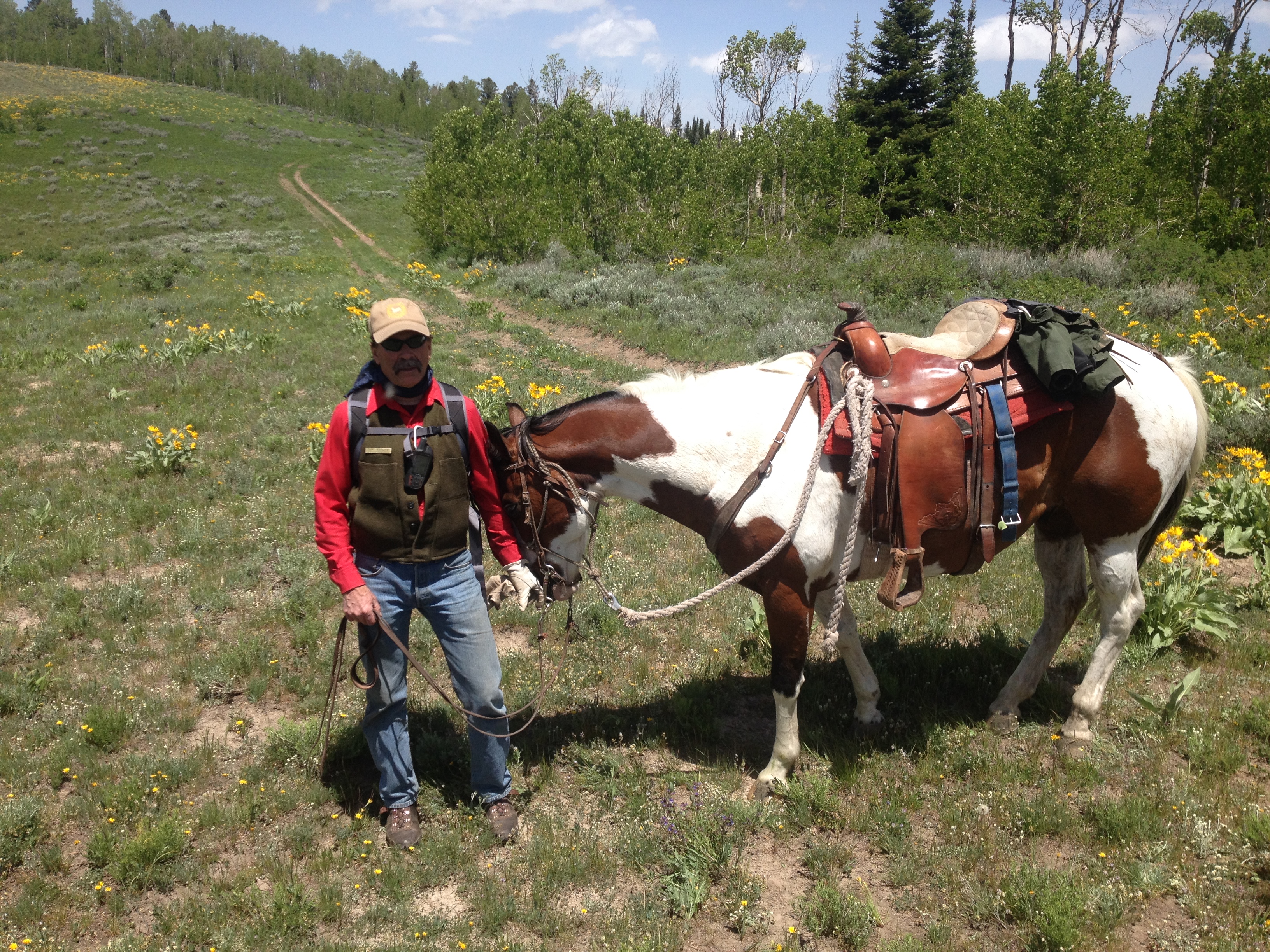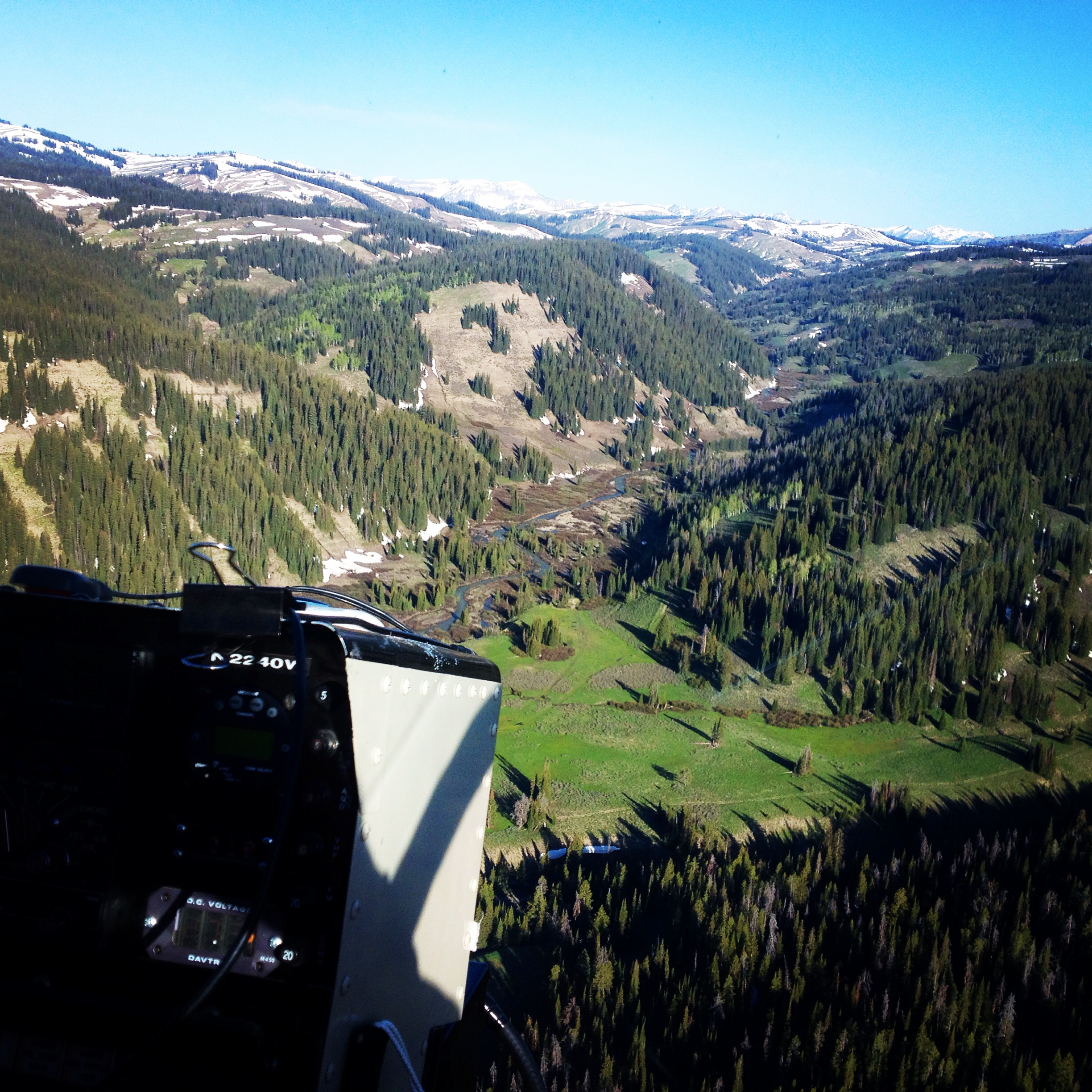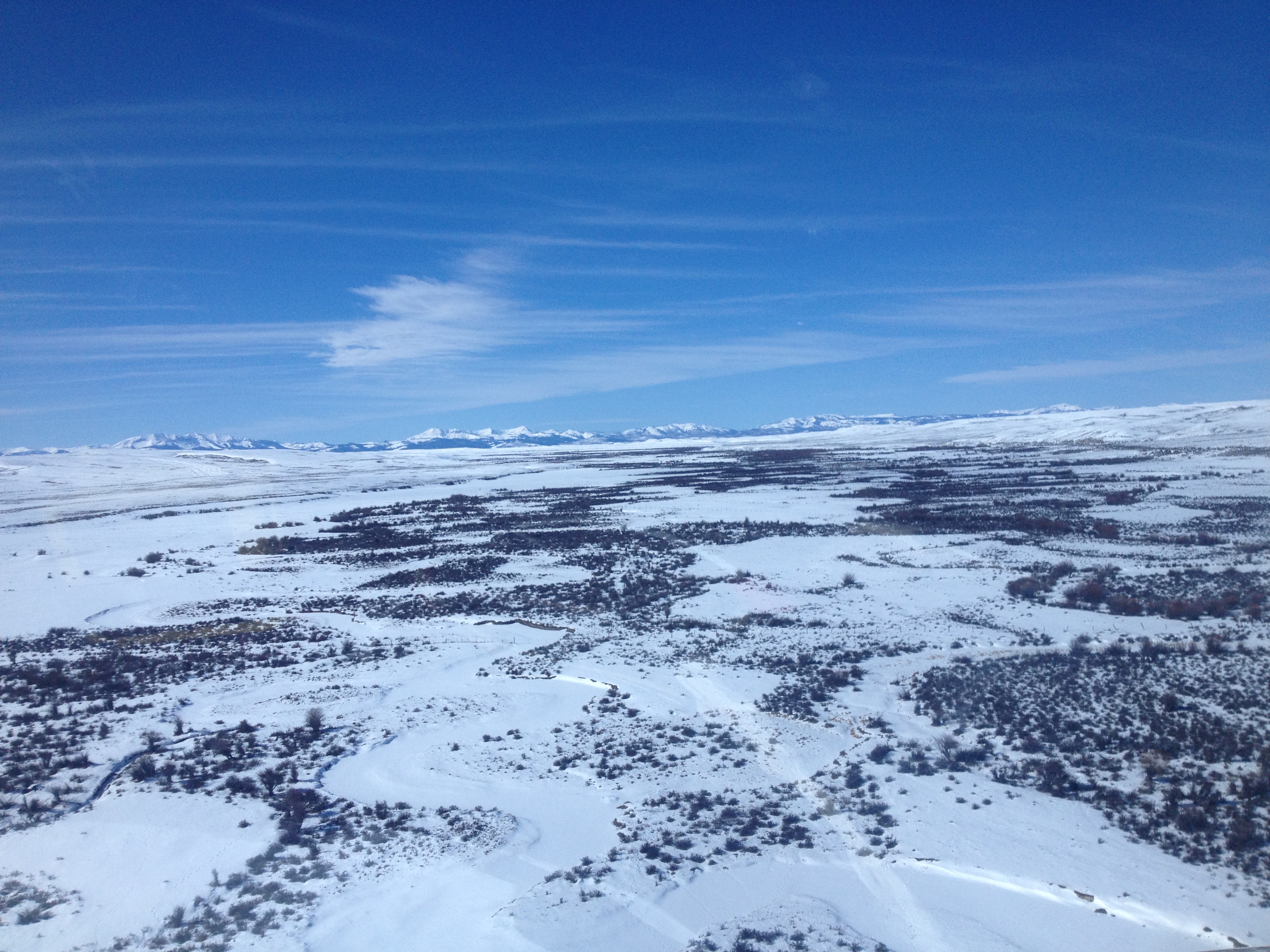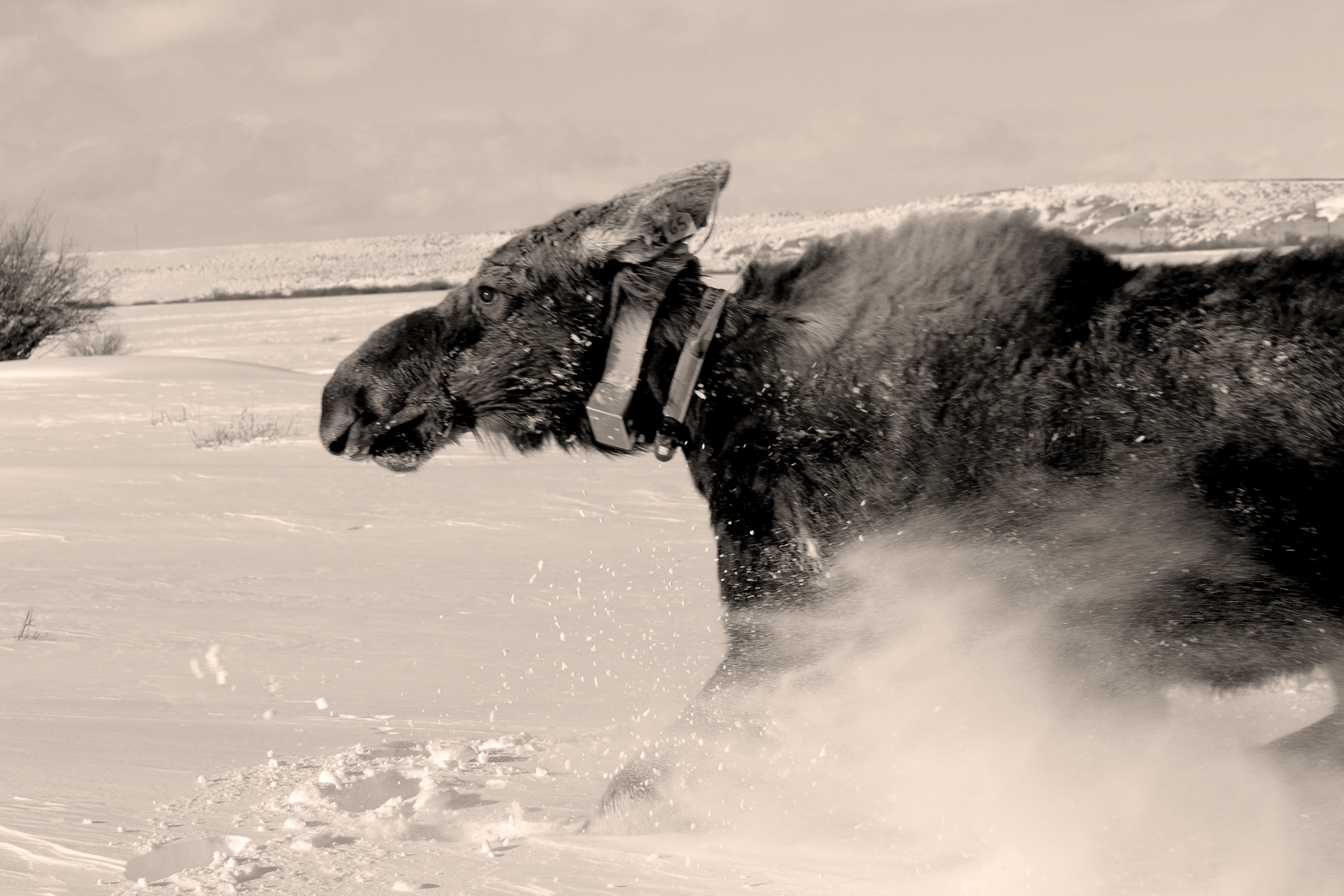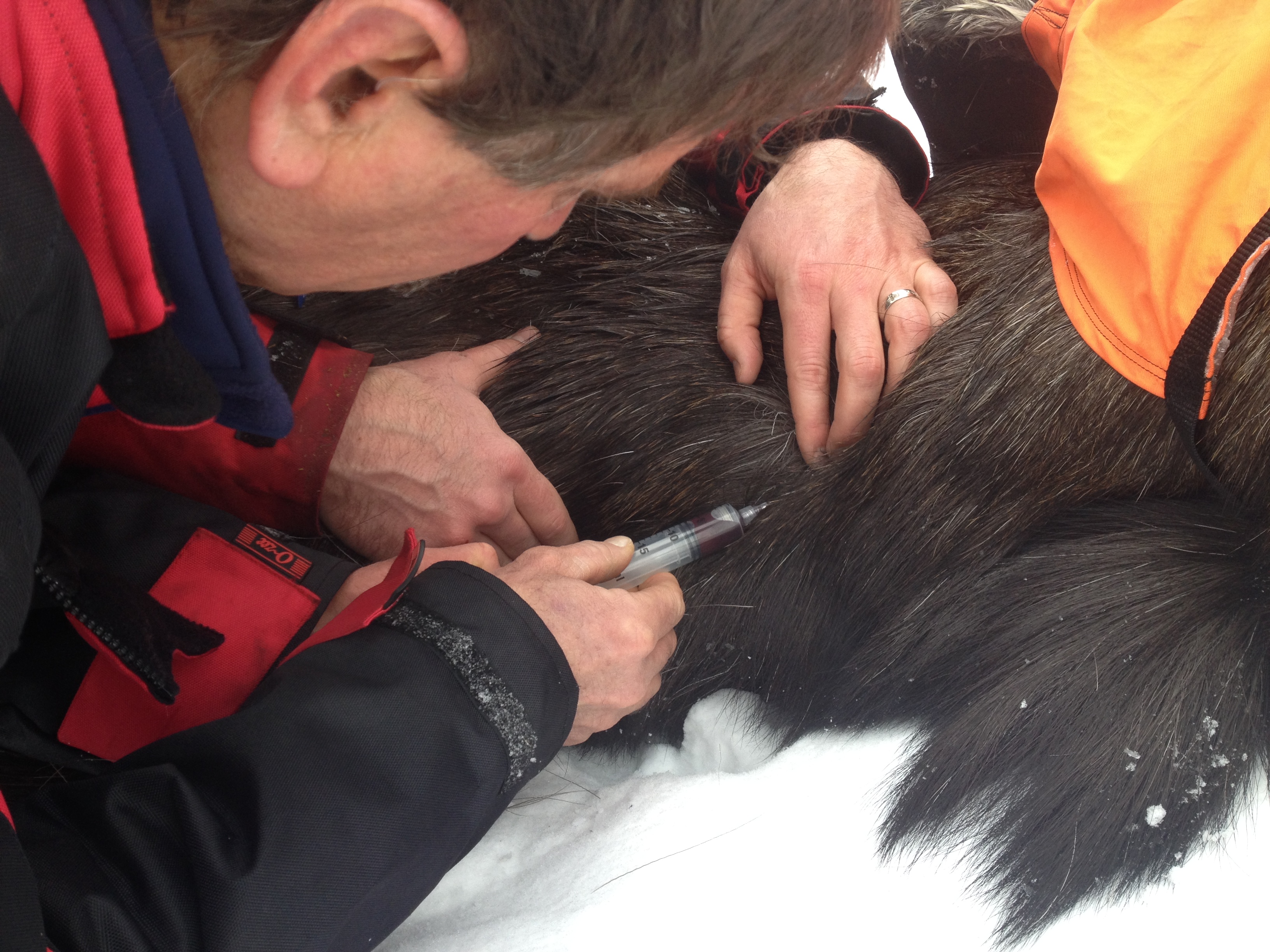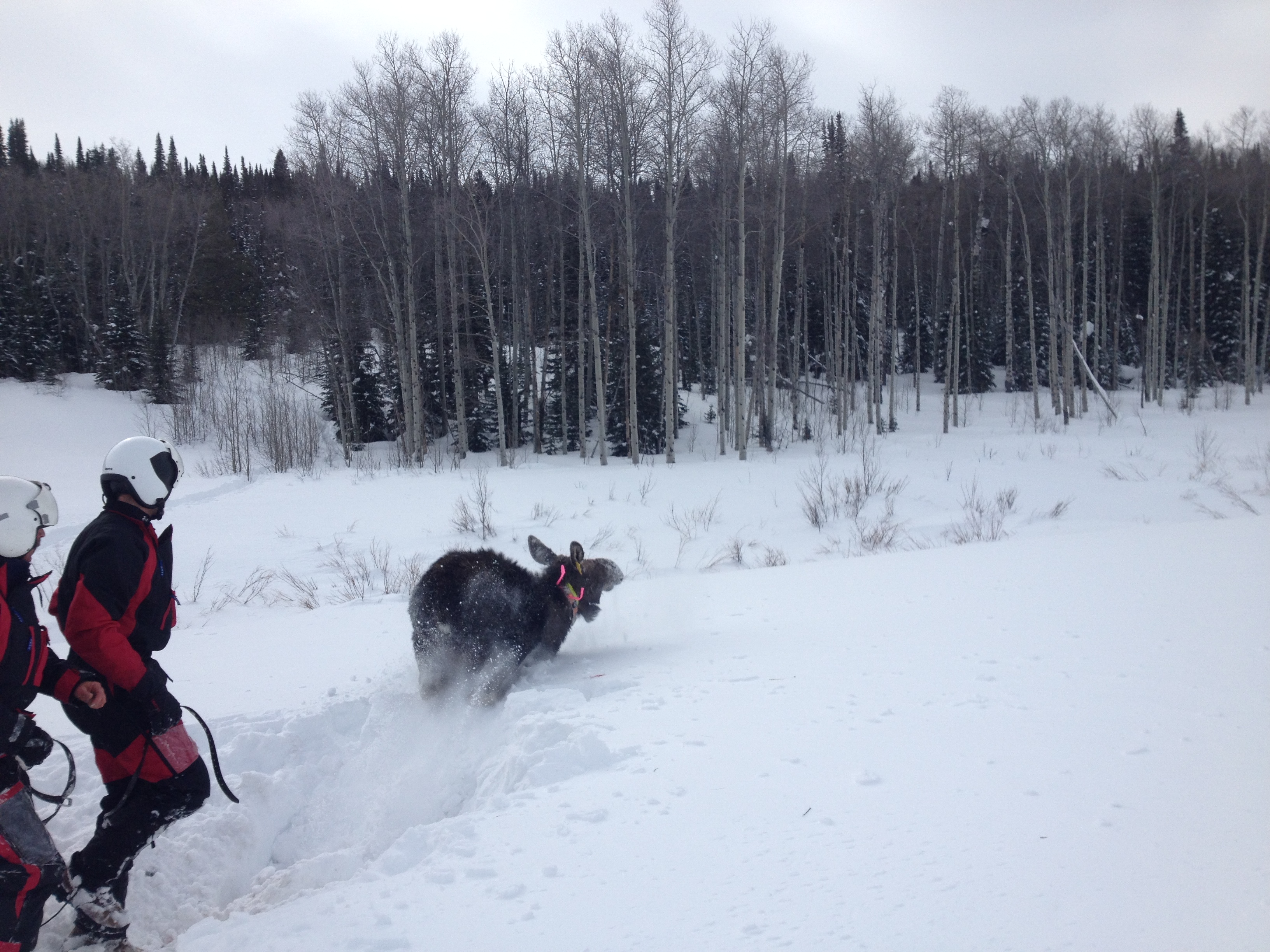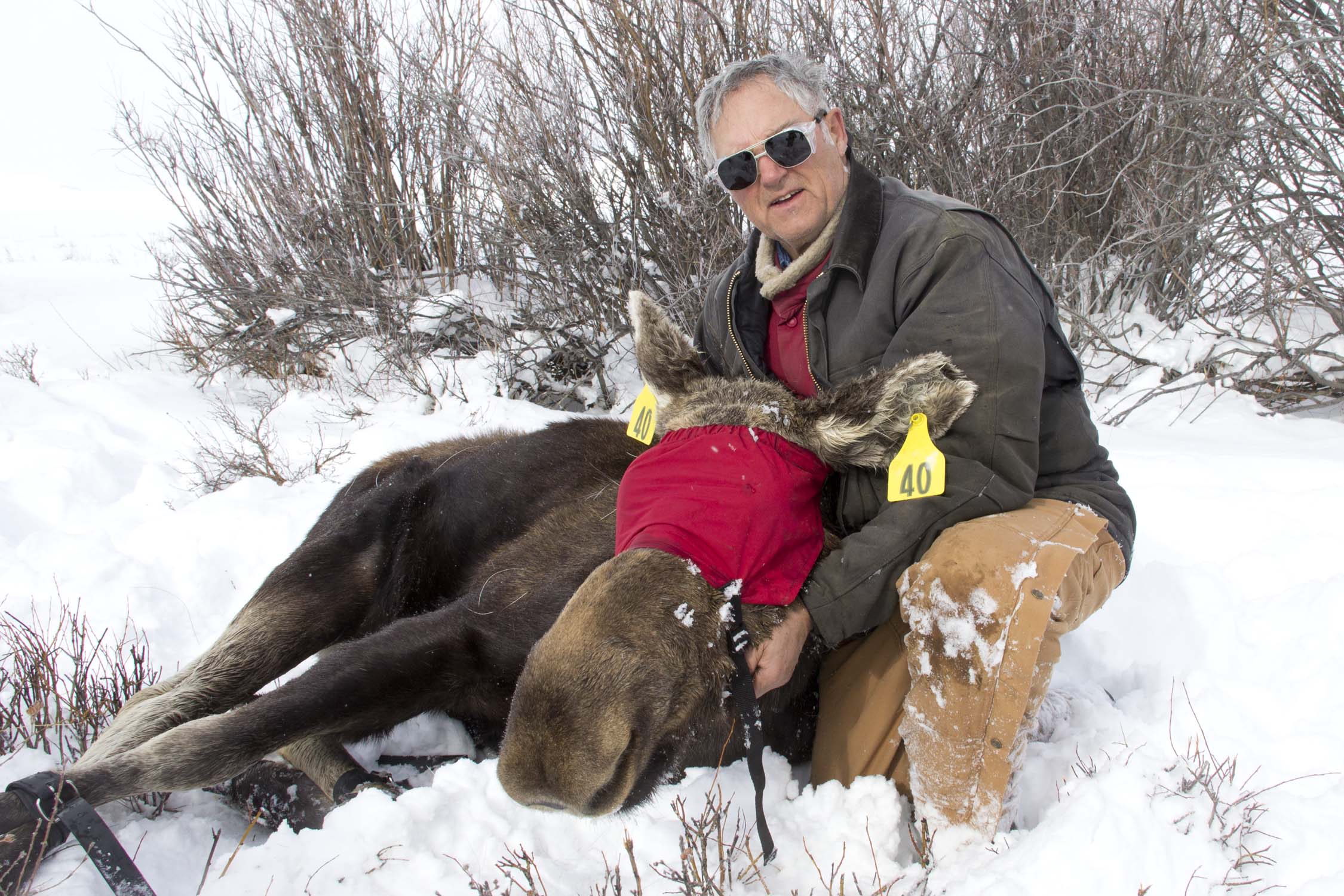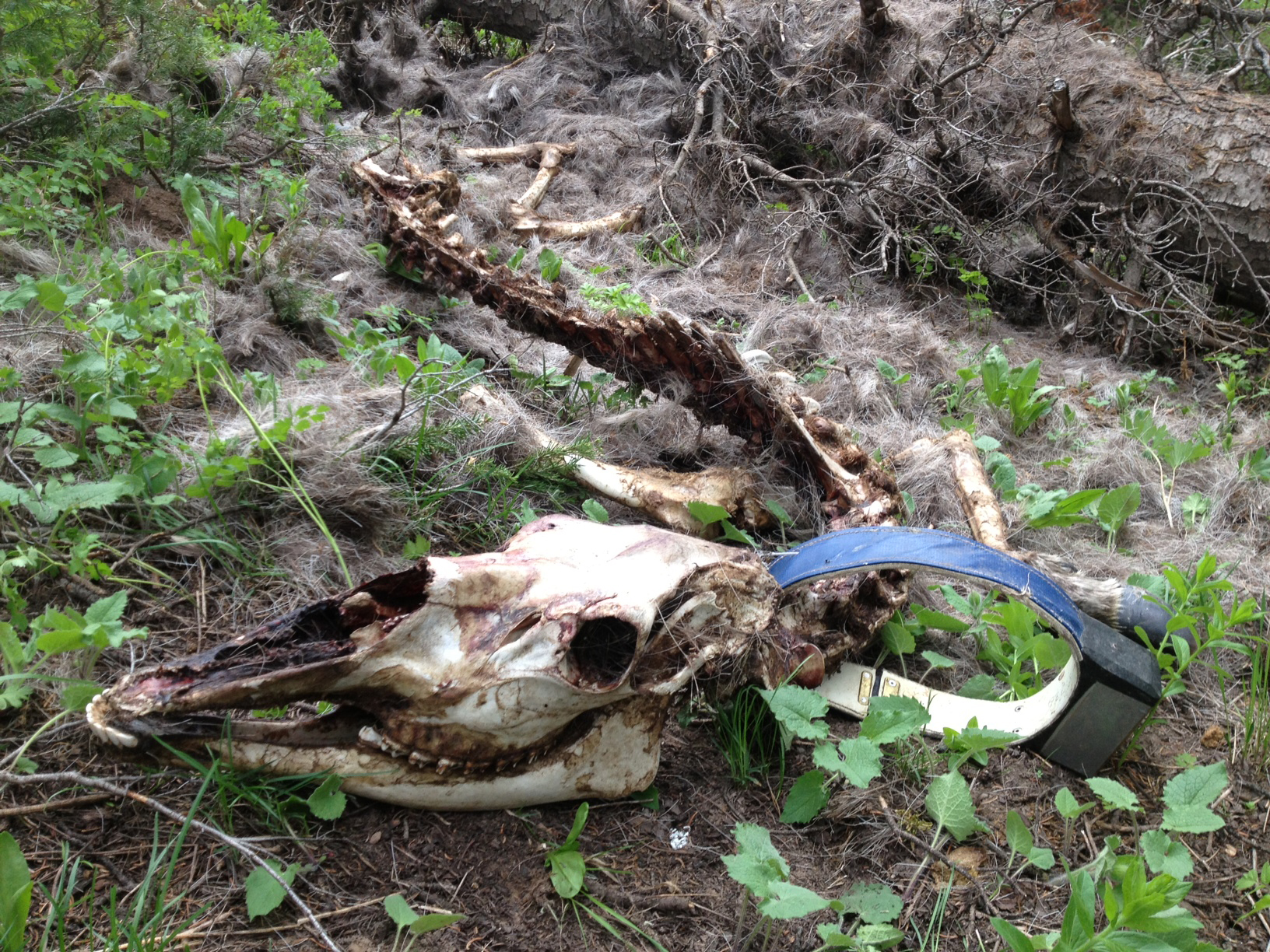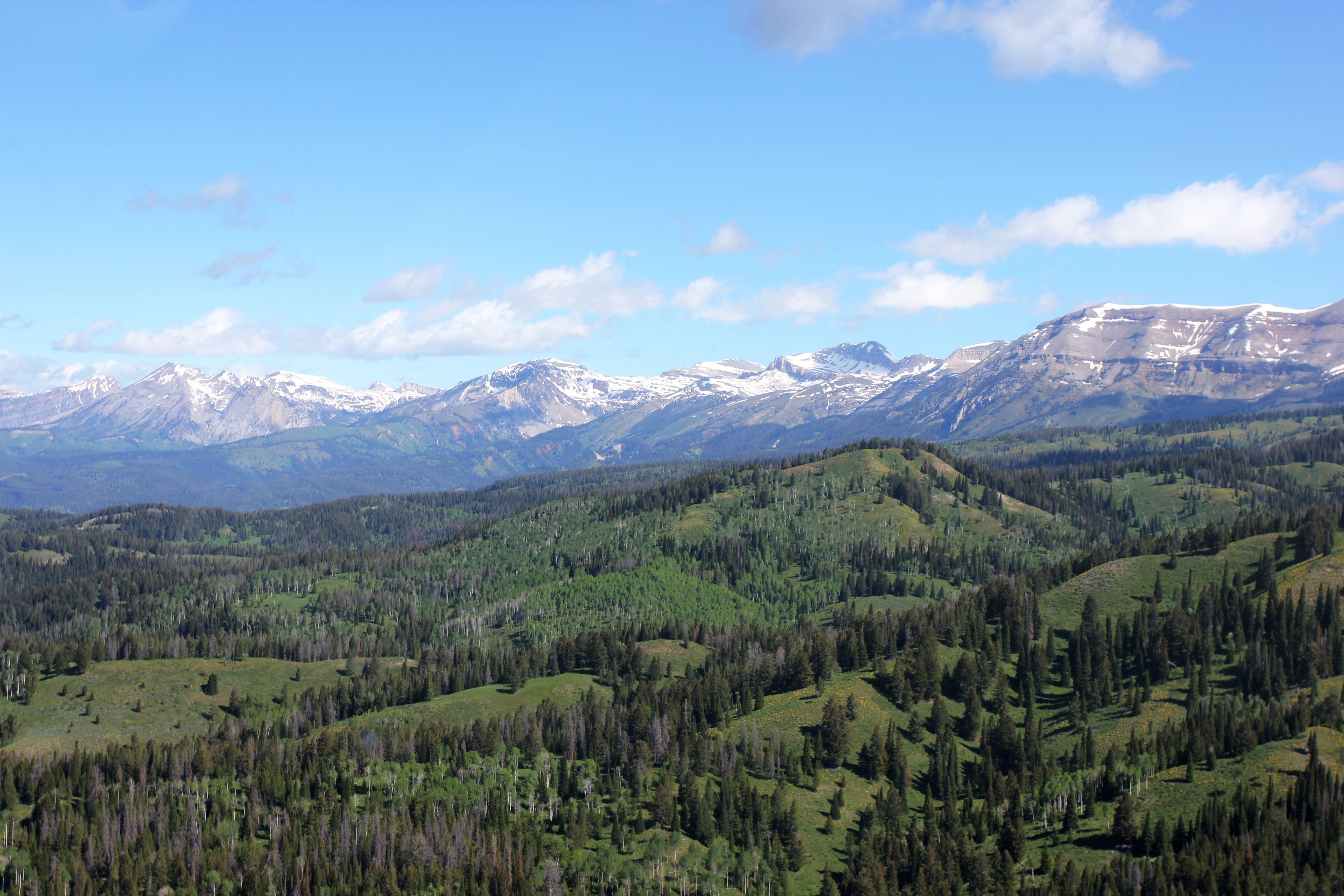In February 2011, we began research in the Hoback River watershed to analyze demography and movement of the largest population of Shiras moose in the continental U.S. Our study was initiated at the behest of the Wyoming Governor’s office to provide information on the survival and fecundity of adult moose, rates of juvenile recruitment, as well as seasonal habitat use and migration corridors.
The motivation for this research was to provide baseline information prior to potential energy development by Plains Exploration and Production Company (PXP) in the Hoback Basin. However, during Fall 2012, a collaboration of sportsmen and sportswomen, conservationists, outdoor enthusiasts, and Wyoming government officials collaborated to offer a buyout of the leases owned by PXP in Hoback Basin. The Trust For Public Land agreed to broker the $8.75 million deal with PXP, which was met 2 months later in December.
While the potential for energy development in the Hoback Basin was greatly diminished by these efforts, there are still natural gas leases (~41,000 acres; hereafter the Wyoming Range Oil & Gas Project or WROG) that fall within our study area near the creeks of South Beaver, North Horse, and Cottonwood. These leases have the potential to compromise a significant proportion of available habitat for moose the inhabitat the Wyoming Range front. Although moose are relatively abundant in the WROG leasing zone, very little is known about their movement or habitat use. Our data are currently providing information on the interacting influences of nutritional condition, disease, and predation, which are critical but poorly understood components of demography for this important Wyoming moose herd. See our 2014 Annual Report for our latest results on the demography of Sublette moose.
Spatially-Explicit Demography of Two Moose Populations with Contrasting Predator Densities
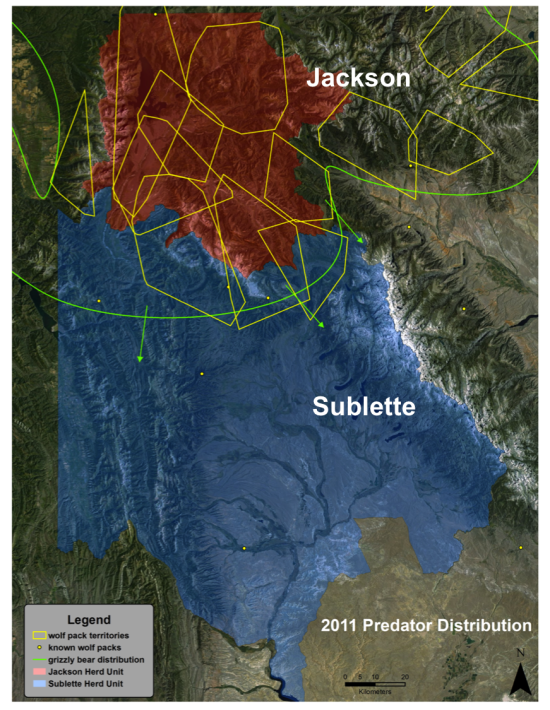
Fig 1. Map of grizzly bear (green line) and wolf (yellow polygons) distribution in 2011 for the Jackson and Sublette moose herds.
Since the mid-1990s, Shiras moose in western Wyoming have exhibited population declines. Recent work in the Jackson herd unit indicated that the 1988 Yellowstone fires and regional drought have contributed to a 20-year decline in calf recruitment. The recent recovery of grizzly bears and gray wolves to the Greater Yellowstone Ecosystem (GYE) are also presumed to have contributed to calf declines, but the influence of these predators has yet to be tested. We are taking advantage of a strong gradient in predator distribution (Fig 1 on right) that has persisted for much of the last decade. We are estimating moose vital rates (adult survival, pregnancy, parturition, neonate survival and over-winter calf survival) as a function of environmental factors experienced by individual moose, including predator density (grizzly bears and wolves), winter severity and habitat condition. The relative influence of apex predators on moose in western Wyoming has been unclear for some time now, and we hope to provide wildlife managers with better information to manage moose into the future.
Both the Sublette and Jackson moose populations have experienced depressed vital rates from poor habitat condition. Sublette moose have exhibited low rates of pregnancy (<75%), which is consistent with poor habitat quality, and high neonate survival (>80%). Overall, Jackson moose exhibited higher rates of pregnancy (>80%) and lower neonate survival (58%), however, previous work also noted a negative effect of the 88 fires on demography. Our spatial analysis of individual fitness in these two herds has enabled us to identify the relative contributions of top-down (predator density) and bottom-up (habitat condition) influences on population performance. This work suggests that Shiras moose in the southern GYE have struggled to cope simultaneously with significant effects of expanding predators and sub-optimal habitat conditions, highlighting the need to prioritize efforts to conserve Shiras moose.
Behavioral Response of Moose to Wolf Presence in the Greater Yellowstone Ecosystem
Changes in prey behavior in response to predator presence, known as Non-Consumptive Effects (NCEs), has been debated for the past decade in the GYE. While most studies have focused on elk anti-predator behavior in respon to wolves, nothing is known about how Shiras moose, an important alternative prey for wolves, perceive or react to such encounters. We are testing whether predation risk from wolves influences habitat use and movement rates of Jackson moose.
As an alternative prey, the behavioral response of moose to wolf presence could differ from elk for three reasons: 1) The abundance of primary prey (elk) may affect the number of encounters between wolves and moose, resulting in a contrasting behavioral response to coursing predators; 2) Moose are generally solitary and therefore do not benefit from the “many eyes” that allow detection of predators as do elk herds; 3) Moose are larger and tend to exhibit more aggressive behavior towards predators compared to elk. A larger body size that is better equipped for traveling through deep snow combined with an aggressive demeanor yields a much higher risk of injury or death for wolves and may influence the distance at which moose respond to wolf presence.
This analysis is using the simultaneous GPS locations of wolves and moose to identify at what distance moose begin to increase their movement rates, and for how long such anti-predator behaviors last. We are also assessing the change in habitat use before, during and after moose encounter wolves. Whether or not moose with calves take proactive measures to avoid encounters with wolves is being evaluated as well. Inferences from this analysis will help wildlife managers better understand the indirect ways in which the reintroduction of wolves is now influencing moose herds of the southern GYE.
Gallery
Reports & Publications
Contact
Brendan Oates, M.Sc. Student
WY Cooperative Fish & Wildlife Research Unit
Dept. 3166, 1000 E. University Avenue
Laramie, WY 82070
[email protected]
mobile: (307) 343-3895
Gary Fralick, Wildlife Biologist
Wyoming Game & Fish Department
P.O. Box 850
Pinedale, WY 82941
[email protected]
office: (307) 883-2998
Scott Smith, Deputy Chief, Wildlife Division
Wyoming Game & Fish Department
5400 Bishop Blvd.
Cheyenne, WY 82006
[email protected]
office: (307) 777-4579
Gary Hanvey, former Bridger-Teton Forest Biologist
Supervisor’s Office
340 N. Cache Jackson, WY
Jackson, WY 83001
[email protected]
office: (307) 739-5537
Project Lead
Timeline
The Sublette Moose Study began collaring efforts in February 2011 (n=30) in the Hoback basin, northwest of Pinedale. Recapture efforts were expanded in February 2012 (n=48) to include more moose further to the south in the drainages of Beaver, Horse and Cottonwood. In Feburary 2013, we augmented our sample size to 65 moose throughout the study area. The majority of GPS collars dropped in February and August of 2014. Data analysis and publication writing is ongoing and is expected to be completed by May 2016.
Funding & Partners
Wyoming Governor’s Office · U.S. Forest Service · Wyoming Governor’s Big Game License Coalition · Wyoming Wildlife The Foundation · Sublette County Outfitters & Guides Association · Wyoming Outfitters & Guides Association · Safari Club International Foundation · Teton Conservation District



